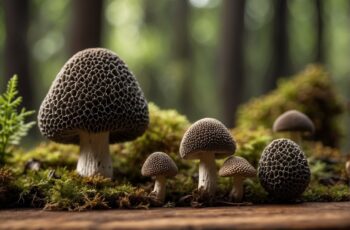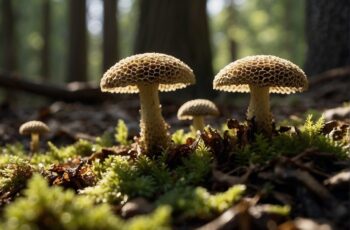Mushroom hunting can be a rewarding outdoor adventure, offering both a fun activity and the satisfaction of foraging your own delicious finds like morel mushrooms, coveted by chefs and amateurs alike. Before heading out into the forest, familiarize yourself with the basic knowledge required for mushroom foraging. Knowing what to look for and where to look can significantly increase your chances of a successful hunt.
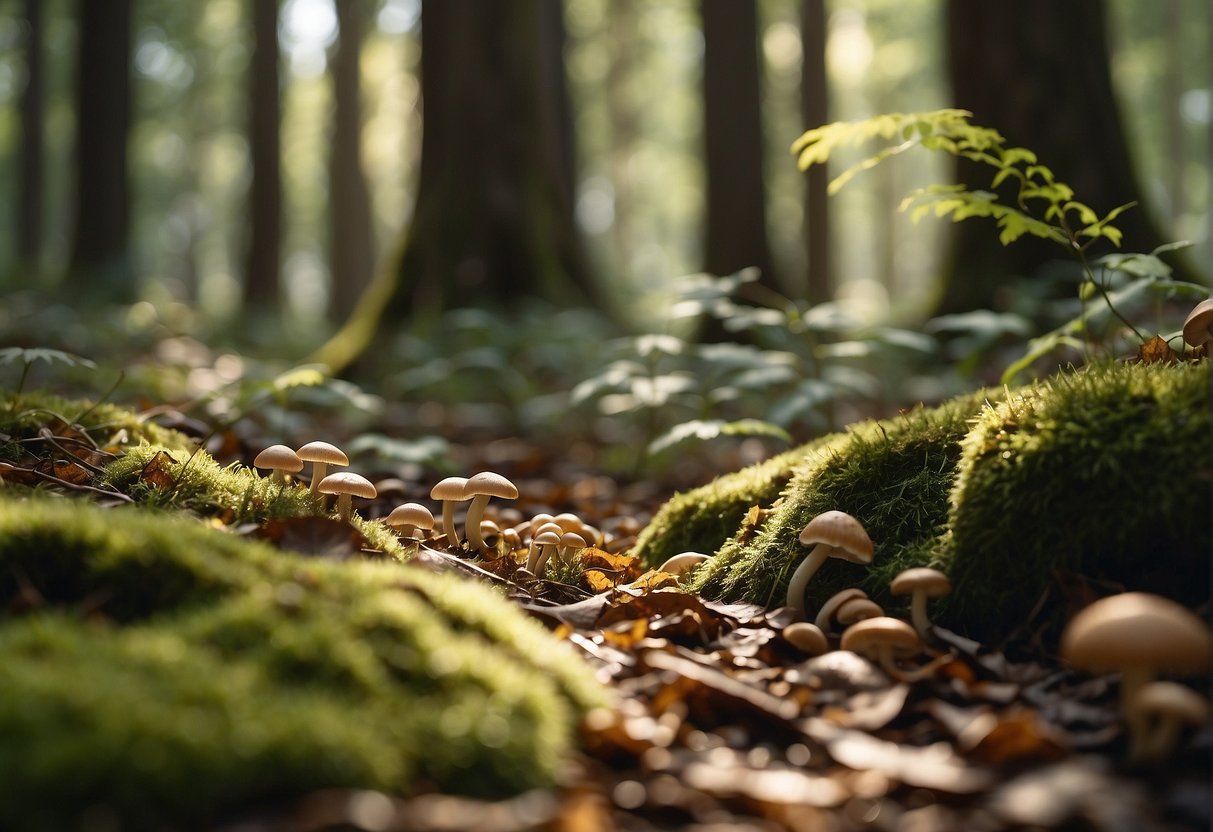
Equipping yourself with proper identification and harvesting techniques is crucial for a safe and sustainable foraging experience. While some mushrooms are a gourmet’s delight, others can be dangerous, and picking them can sometimes impact the environment. Understanding the delicate balance of ecosystems where mushrooms thrive will contribute to a responsible and fruitful foraging practice.
Key Takeaways
- Engaging in mushroom hunting requires knowledge of mushroom species and their environments.
- Identification and ethical harvesting methods are key to a safe mushroom foraging experience.
- Joining the mushroom hunting community enhances learning and increases chances of success.
Planning Your Mushroom Hunt
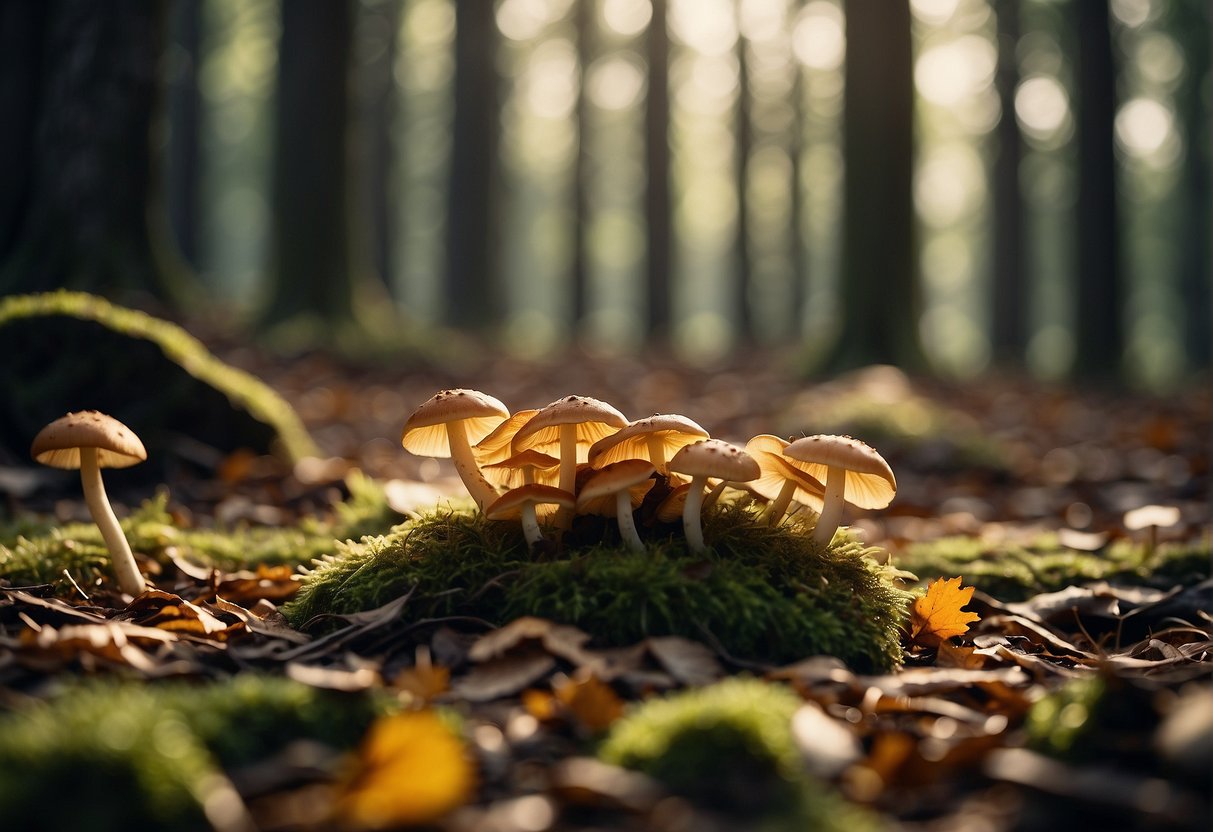
Embarking on a mushroom hunt can be a rewarding outdoor adventure. Strategic planning considering weather, locations, and essential gear will ensure you have a successful foray into the world of fungi.
Understanding Seasons and Weather
Many edible mushrooms thrive in specific seasons such as spring and fall; these are prime times for foragers. In the spring, morels are prized finds, particularly after rain when soil temperatures rise. The fall season also brings an array of fungi, thanks to cooler temperatures and moist environments. Regions like the northeast United States, Michigan, Wisconsin, and parts of Canada are known for their rich mushroom varieties during these seasons.
Selecting the Right Locations
Successful mushroom hunting requires keen knowledge of the landscape. South-facing slopes often accumulate warmth and encourage early fungal growth, while north-facing slopes may retain moisture better. Hunters in the Pacific Northwest, an area abundant with mushrooms, benefit from the consistent moisture and diverse habitats. Whether you’re in Washington, Oregon, or California, focus on areas with dense canopy coverage or recent natural disturbances like wildfires, which mushrooms, like morels, often follow.
Essentials for Mushroom Foraging
Your foraging gear should include:
- A knife for clean cuts
- A basket or mesh bag to allow spores to spread
- Comfortable footwear for varied terrain
- Bug spray to ward off insects
- Water to stay hydrated
Always check local regulations as states like Indiana, Minnesota, Montana, Ohio, and Texas may have specific rules regarding mushroom foraging. Remember that some areas might require permits. Whether you’re a seasoned forager or a beginner, being prepared is crucial for a successful mushroom hunting experience.
Identification and Harvesting Techniques
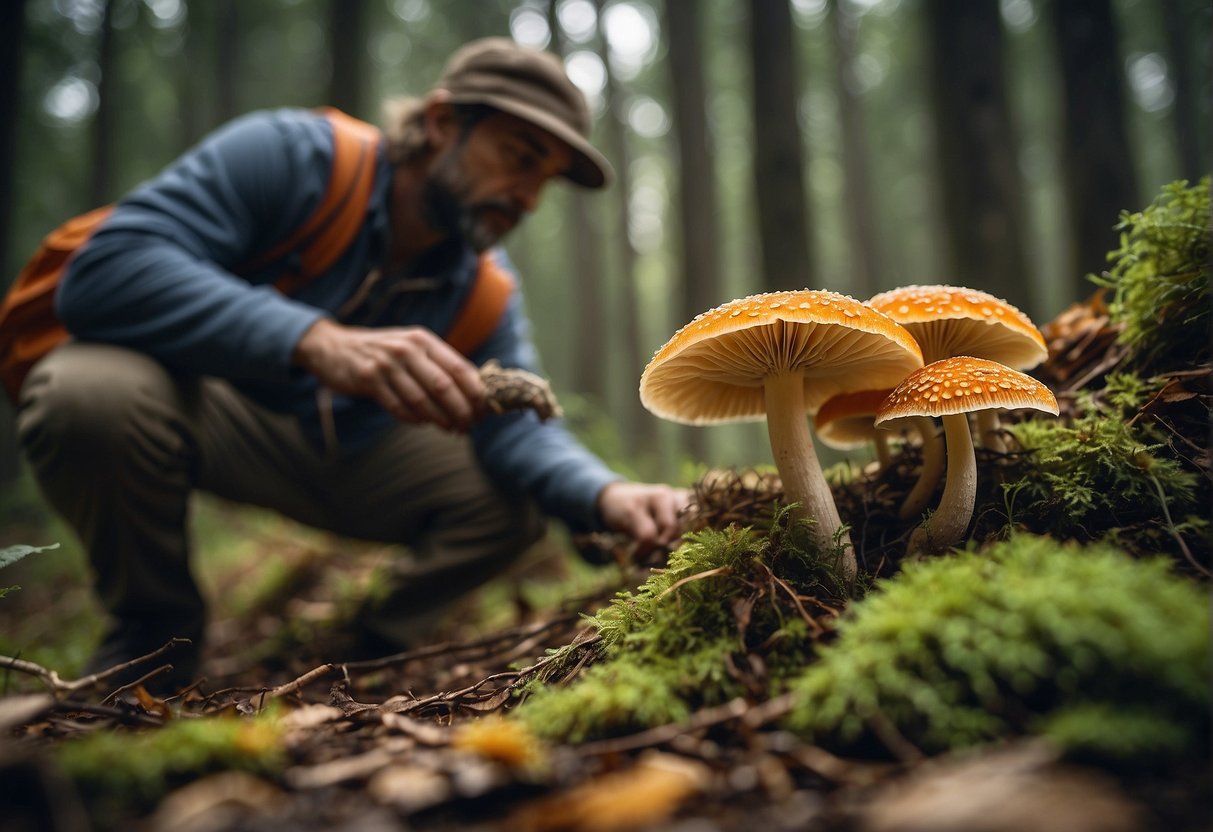
When setting out on a mushroom hunting adventure, it’s crucial to be able to accurately identify species for safety and utilize proper techniques for sustainable harvesting. Knowing the difference between a delicious morel and a poisonous false morel is a matter of health, while the right harvesting methods ensure the continued growth of mushrooms in the area.
Species Identification and Safety
Identifying mushrooms accurately is an essential skill in mushroom hunting. Edible mushrooms, such as morels (Morchella) and chanterelles, have distinct features that differentiate them from poisonous mushrooms and look-alikes like false morels. It starts with noting the cap shape, color, size, and any unique patterns. Pictures in field guides are helpful, but remember that actual mushrooms can vary in appearance. For safety, always cross-reference with multiple sources, such as identifying morels accurately.
- Morel (Morchella): Honeycombed cap with ridges and pits;
- Chanterelles: Fan or trumpet-shaped, with wavy edges and a smooth underside.
Safety tips:
- Never consume a mushroom unless you are 100% certain of its identity;
- Attend a guided foray or invest in a workshop to gain hands-on identification skills from experts.
Harvesting Methods
Harvesting mushrooms the right way ensures that you leave the environment as undisturbed as possible and allow for future growth. A gentle brush to remove debris and a sharp knife are your best tools for this task.
Harvesting tools:
- Knife: Used to cut the stem cleanly below the cap;
- Basket: Allows spores to disperse as you continue your hunt.
Harvesting steps:
- Spot your mushroom, ideally a perfectly peaked morel mushroom.
- With your knife, cut the stem just above the soil to avoid uprooting.
- Gently place your find in a woven basket. This helps spread the spores and promotes a new cycle of growth for future seasons.
Remember to tread lightly in nature, respecting the habitat by minimizing your footprint lest we disturb the delicate ecological balance that nourishes our fungal friends. Happy hunting, and may your basket be bountiful with nature’s hidden treasures.
Habitats and Ecosystems
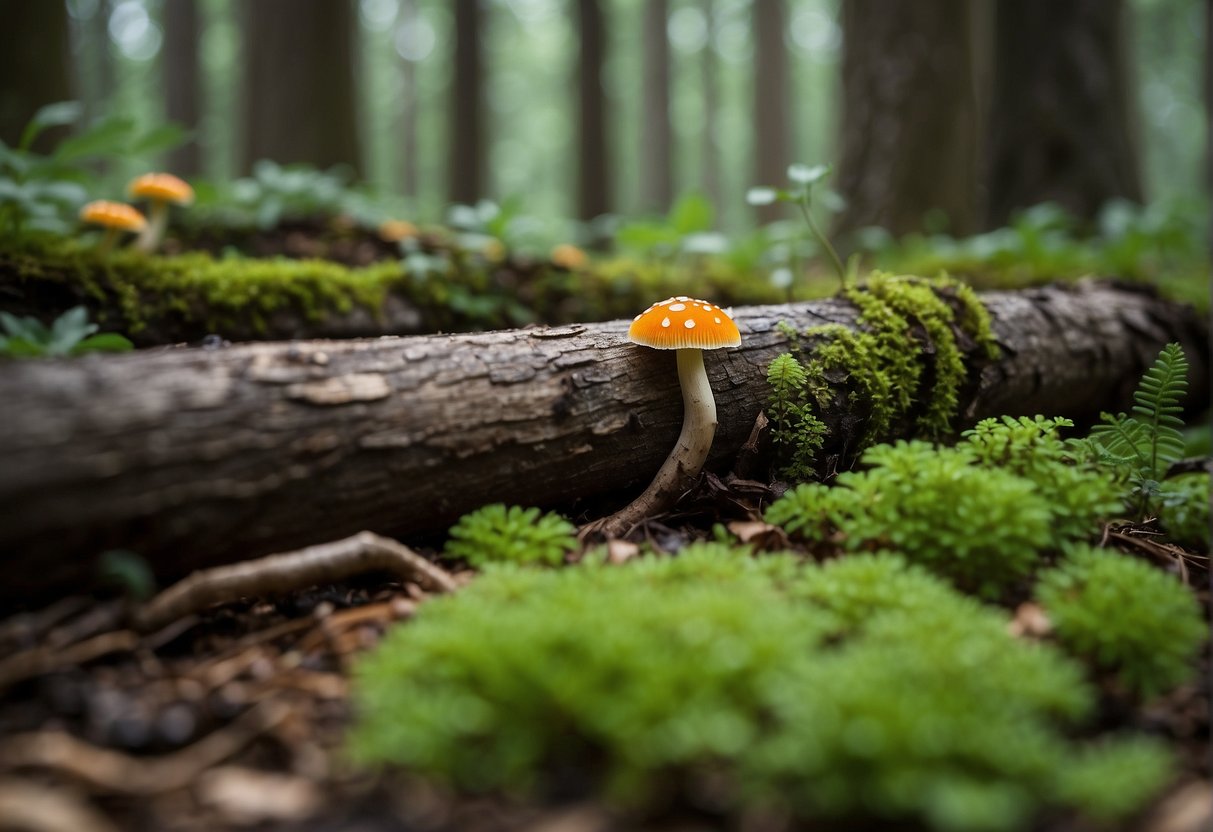
When you set out for mushroom hunting, the environments where you search play a pivotal role in what you’ll find. Different mushroom species thrive in specific habitats, often correlated with various tree species and terrain features.
Forests and Tree Types
In your quest for mushrooms, forests are your prime location. Morel mushrooms, sought after for their unique flavor and rarity, flourish near certain trees. You’ll want to check around elms, especially those that have recently died, as morels have a symbiotic relationship with these trees. Cottonwoods in river bottoms and aspen stands are also hotspots for these coveted fungi. Furthermore, if you’re in the East, ash trees and tulip poplar are good indicators of potential morel territory.
Apart from morels, different species favor other trees; apple trees are often good places to look for shaggy manes, and boletes love the area around oaks. It’s essential you understand these relationships to increase your chances of a bountiful hunt.
Landscape and Terrain Features
Terrain features can serve as useful signposts to fruitful mushroom hunting grounds. Keep an eye out for burn areas, especially recent ones. Morels particularly thrive in these nutrient-rich, changed environments. The presence of fiddleheads, pheasant backs, or other fungi often signals a healthy environment where mushrooms grow.
Also, consider the terrain: fallen trees and undisturbed forest floors can create the damp, shaded conditions that mushrooms need to prosper. It’s not just about the trees but about the right kind of landscape that supports the delicate ecosystem mushrooms require. Remember, respecting these habitats is as vital as enjoying them, so tread lightly and leave no trace of your visit.
Connecting with the Mushroom Hunting Community
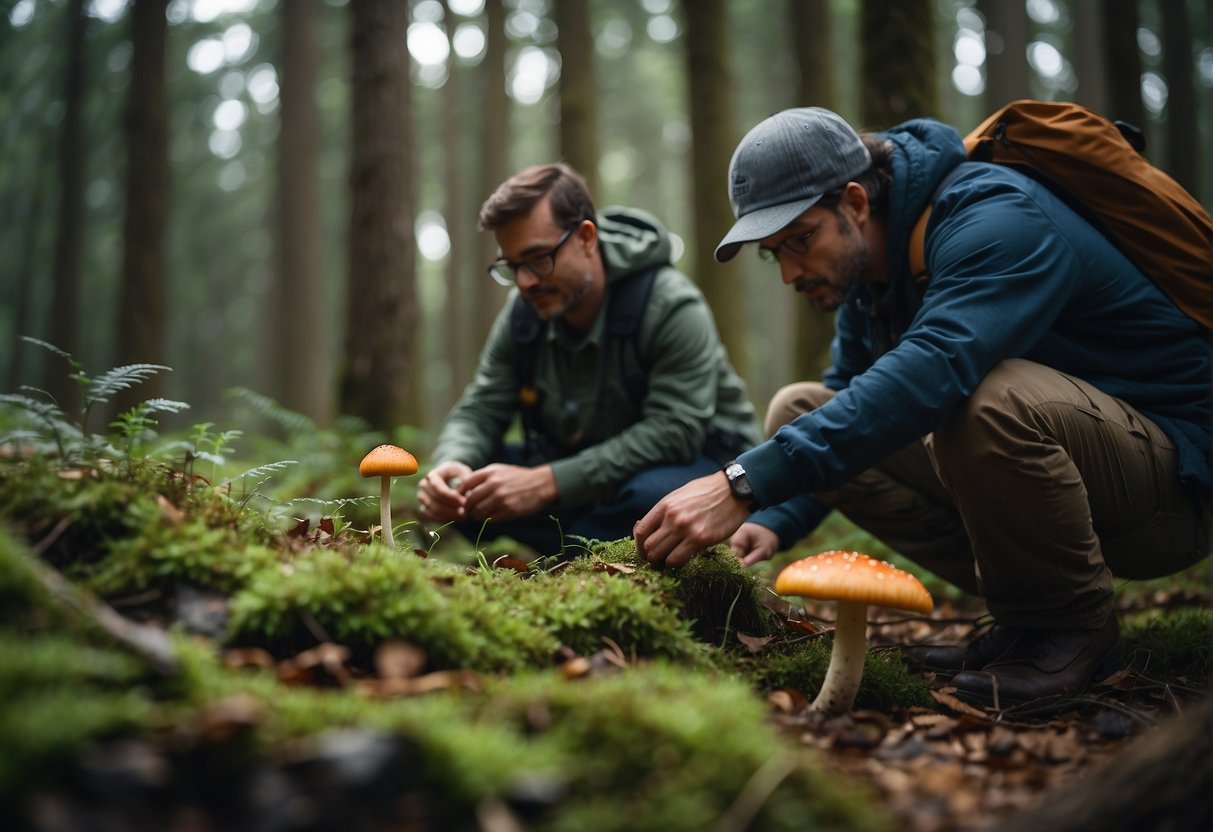
Engaging with local mushroom hunting groups and participating in educational experiences like foraging tours or classes can significantly enhance your understanding and enjoyment of foraging.
Local Groups and Online Forums
Joining a local mushroom foraging group can provide you with valuable insights into the best hunting grounds in your area. These groups often organize regular walks where you can learn about tree identification which is essential for locating certain types of mushrooms. You can typically find these groups on platforms like Facebook, where you can easily contact other enthusiasts. These groups are not just about foraging; they’re about building a community through a shared passion for nature’s hidden delights.
Guided Tours and Classes
If you prefer a more structured environment, look for guided foraging tours or classes offered by local experts. These can offer hands-on experience and personal guidance on safely identifying and harvesting mushrooms. Some organizations, like Eat the Planet, offer classes on both public and private land. By enrolling in a class, you not only learn the best practices of mushroom foraging but also how to sustainably harvest and even cook your finds.

